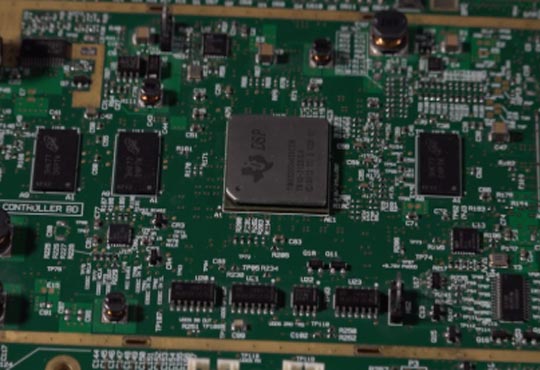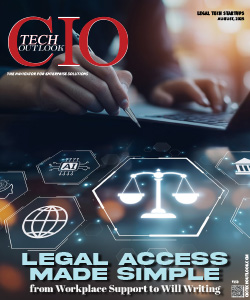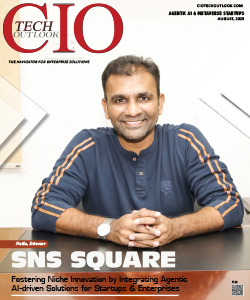System-On-A-Chip Architecture Ensures Future Adaptability
CIOReviewIndia Team | Monday, 11 November 2019, 12:28 IST
 As demand for secure, user-friendly, autonomous scanning grows, Alaris is at the forefront of innovative document capture solutions that are built on a technology infrastructure that is adaptable, scalable and cost efficient.
As demand for secure, user-friendly, autonomous scanning grows, Alaris is at the forefront of innovative document capture solutions that are built on a technology infrastructure that is adaptable, scalable and cost efficient.
Changing business requirements
Volume and complexity of data flowing in and out of organizations continues to grow exponentially, underscoring the importance of adaptivity when choosing an information capture solution. One of the most challenging problems facing organizations in today’s fast-moving digital world is that slow legacy processes and systems impede the flow of information, which is the lifeblood of any business.
IT overhead, exception handling, and securely extracting data from images and pushing them directly into cloud-connected business processes are cost saving automation opportunities where progressive companies are extracting great value. This creates demand for a more flexible and adaptable scanner, with an architecture that future-proofs investments.
Beyond high quality images, document scanners that can connect directly to business processes offer value and performance that exceeds their investment cost. Those benefits are only enabled through forward-thinking design choices under the hood that deliver downstream value at the point of capture.
Answering the Bell
Alaris scanners are known for producing high-quality images, but to deliver a package that meets these emerging needs, Alaris needed a more flexible approach. We leveraged our core strength of image quality and raised it to the next level, extending the capabilities of document scanner hardware, and redefining user expectations for the device.
This challenge was met by the implementation of System-on-a-Chip, or SoC, into the Alaris product line. SoC extends the scanner’s capabilities by combining components like CPUs, accelerators, and memory, traditionally in separate chips, into one. The result is a scanner packing enough power to deliver significant business value beyond high-quality images.
What Kind of Business Value?
We’re glad you asked. The first benefit is in the scanner’s ability to operate independently. In many cases, this simply means not being connected via a USB cable to an adjacent PC. But in the age of “edge devices,” this can be extended to include documents’ points-of-origin like warehouses, shipping docks, remote locations, and anyplace inhospitable to a PC, but with access to a wireless connection.
The next benefit is ease of use. Unforeseen costs invade the hardware lifecycle from setup time, to firmware updates, to the deployment of new on-screen options. Alaris’ focus is firmly on user interfaces and making sure knowledge workers can get jobs done faster, with fewer mouse clicks, or fewer touches on a touch screen. Our easy setup sheet allows the pre-configuration of network settings before the scanner is unboxed and enables end users to set devices up with the press of a button and no IT involvement. Once connected, driver-less integration with a web API enables integrators to manage the scanner without having to install any drivers on a PC - a huge benefit for enterprises.
Alaris scanners save valuable time in exception handling. The SoC architecture, combined with Alaris’ powerful Capture Pro Software, enables verification of data on forms at the point of capture. If a signature is missing or a box unchecked, the end user is notified immediately, not after the document is routed to its destination and the exception relayed by a human on the other end, delaying the business process.
Finally, SoC delivers a security benefit unique to Alaris scanners, but gaining more visibility across every industry: data handling. In competitor’s scanners, images are captured but then take a detour to a PC or server to produce the finished image file before being routed to their ultimate destination. These detours are potential points of attack for outsiders looking to steal data. Additionally, document data can often linger in scanner or MFP memory long after the scan. When sensitive data is involved, more vulnerabilities can mean costly compromises. Alaris solves all of the above by finishing files on the scanner and securely transmitting them directly to their endpoints, whether e-mail, secure FTP, or a cloud application. Then data is wiped from the scanner’s memory immediately after jobs are complete, ensuring data remains safe.
Tomorrow’s technology is available today
Powered by decades of image science expertise, Alaris continues to develop products and services tailored to changing business requirements, ensuring its award-winning portfolio meets today’s challenges and is flexible to adapt to address tomorrow’s needs.
The SoC architecture reinforces Alaris’ reputation for delivering customer-focused solutions that transform their investment into a future-proof asset that remains adaptable, scalable, and offers cost savings well into the future.




